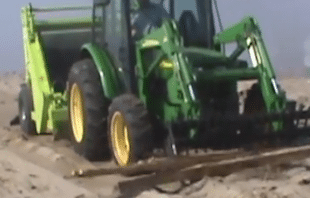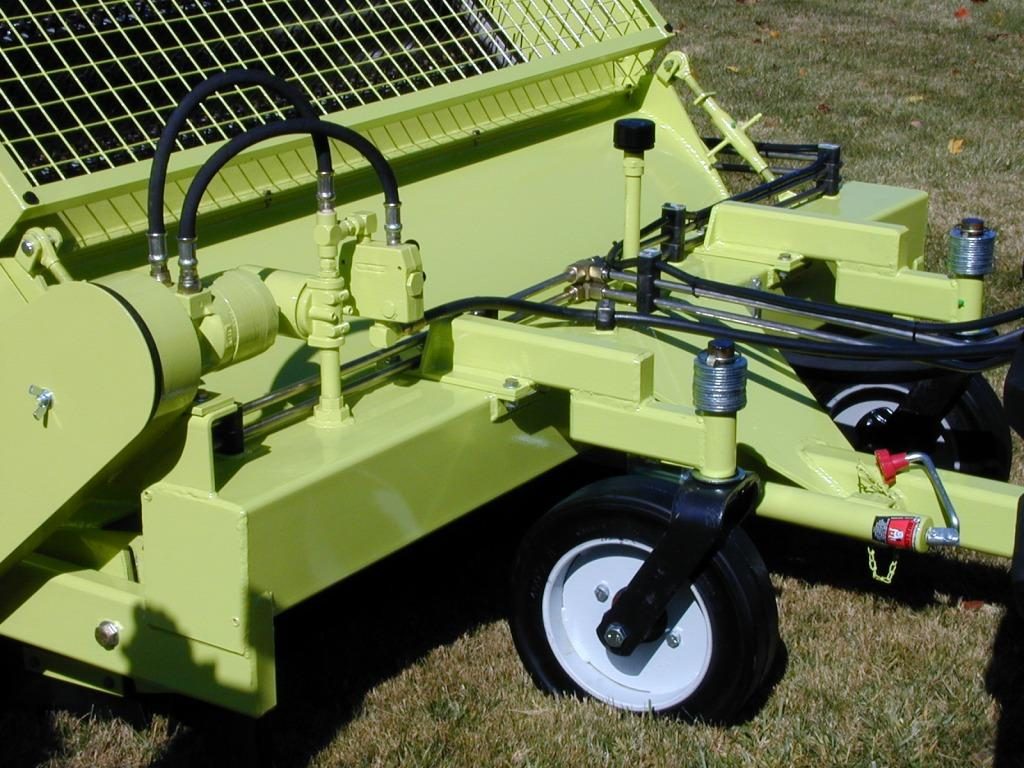- +1 203 729 9000
- hbarber@hbarber.com
- Mon - Fri: 9:00 - 18:00 EST
In addition to fulfilling the normal requirements of a beach cleaning machine, the SURF RAKE can prove especially helpful with beach restoration and cleanup after a hurricane. Hurricane Sandy wreaked havoc upon coastal towns, especially along the New Jersey and New York coastline, and undoubtedly the majority of the efforts will go towards rebuilding those communities. But when it comes time clean up and restore the beach, we have several recommendations on how to best purify the beach sand and utilize your SURF RAKE.

The goal of restoring the sand to the beach should not just be to return it there, but also to ensure that this sand is free of contaminants. Especially after being washed up on shore where flooding may have uprooted significant amounts of garbage, trash and debris such as shattered glass, wood, and other materials from the storm’s destruction. The sand that is returned to the beach must be cleaned.
It may be prudent to consider the time of year. If the storm comes during late hurricane season, like Sandy, and the beaches will not be used during the winter, this may give you time to properly sanitize the sand so you are not dealing with resurfacing debris in the summer. Regardless of whether you begin restoring the sand immediately or later, you can follow a similar process.
To start, we recommend using a tractor loader or similar heavy-duty vehicle to first remove the large debris from the beach. Then use the tractors to transport and lay the sand back on the beach, as shown in the photo bellow, which depicts sand being replaced on a Maryland beach after Hurricane Sandy.
In order to ensure that the newly-placed beach sand is free of contaminants, you want to remove the debris from the sand while it is being replaced, not after all the sand has been put back on the beach. Spread the sand back on the beach and clean it in layers. It may be helpful to use a tractor loader with a grapple or rock bucket to remove very large debris.
After each layer is returned, and the larger debris is removed, then use your SURF RAKE to remove the balance of the debris from the sand. Ideally, each layer would be no more than 6” deep to minimize the promotion of future erosion. As noted above, the SURF RAKE’s primary function would be debris removal during the debris removal phase; however, the SURF RAKE’s ability to level the beach from a rough grade to a final grade while simultaneously removing fine debris using its patented ‘Sanitizing’ cleaning technology make it a valuable tool in the ‘fine mechanical reshaping process.’
When planning to restore a beach after a hurricane, it is essential to realize that it is an ongoing process. Even after the sand is transported from its displaced position back to the beach and purified, the debris that washed out with the flooding will be washing up with the tide. Therefore, you will need to implement regular cleaning for a while after the storm to prevent storm garbage from building up on the beach.
An intense cleaning maintenance schedule for a period of 6 to 8 months should be put in place to remove this additional debris utilizing the Barber SURF RAKE. In some severe cases, a beach re-nourishment or restoration should be considered.
In summary, post-hurricane beach restoration should follow five approximate steps:
In order to ensure that the newly-placed beach sand is free of contaminants, you want to remove the debris from the sand while it is being replaced, not after all the sand has been put back on the beach. Spread the sand back on the beach and clean it in layers. It may be helpful to use a tractor loader with a grapple or rock bucket to remove very large debris.
After each layer is returned, and the larger debris is removed, then use your SURF RAKE to remove the balance of the debris from the sand. Ideally, each layer would be no more than 6” deep to minimize the promotion of future erosion. As noted above, the SURF RAKE’s primary function would be debris removal during the debris removal phase; however, the SURF RAKE’s ability to level the beach from a rough grade to a final grade while simultaneously removing fine debris using its patented ‘Sanitizing’ cleaning technology make it a valuable tool in the ‘fine mechanical reshaping process.’
When planning to restore a beach after a hurricane, it is essential to realize that it is an ongoing process. Even after the sand is transported from its displaced position back to the beach and purified, the debris that washed out with the flooding will be washing up with the tide. Therefore, you will need to implement regular cleaning for a while after the storm to prevent storm garbage from building up on the beach.
An intense cleaning maintenance schedule for a period of 6 to 8 months should be put in place to remove this additional debris utilizing the Barber SURF RAKE. In some severe cases, a beach re-nourishment or restoration should be considered.
In summary, post-hurricane beach restoration should follow five approximate steps:
While this covers the general technique of ensuring that newly replaced sand is clean and graded, we invite you to contact us with any specific questions you may have.
In addition to being helpful in cleaning and restoring beaches after hurricanes, Barber’s products can also be used to remove debris on grass and pavement surfaces that may have accumulated due to flooding, winds, and property damage.
If you currently own a SURF RAKE, you can convert it from a beach cleaning machine to a litter collection machine to help the land clean-up process. Its tine raking system utilizes the same technology found on the LITTER PICKER and ROAD RAKE and is suitable for working on land and beaches. By adjusting your moldboard and the tractor draft settings properly, the SURF RAKE can become a valuable tool.
